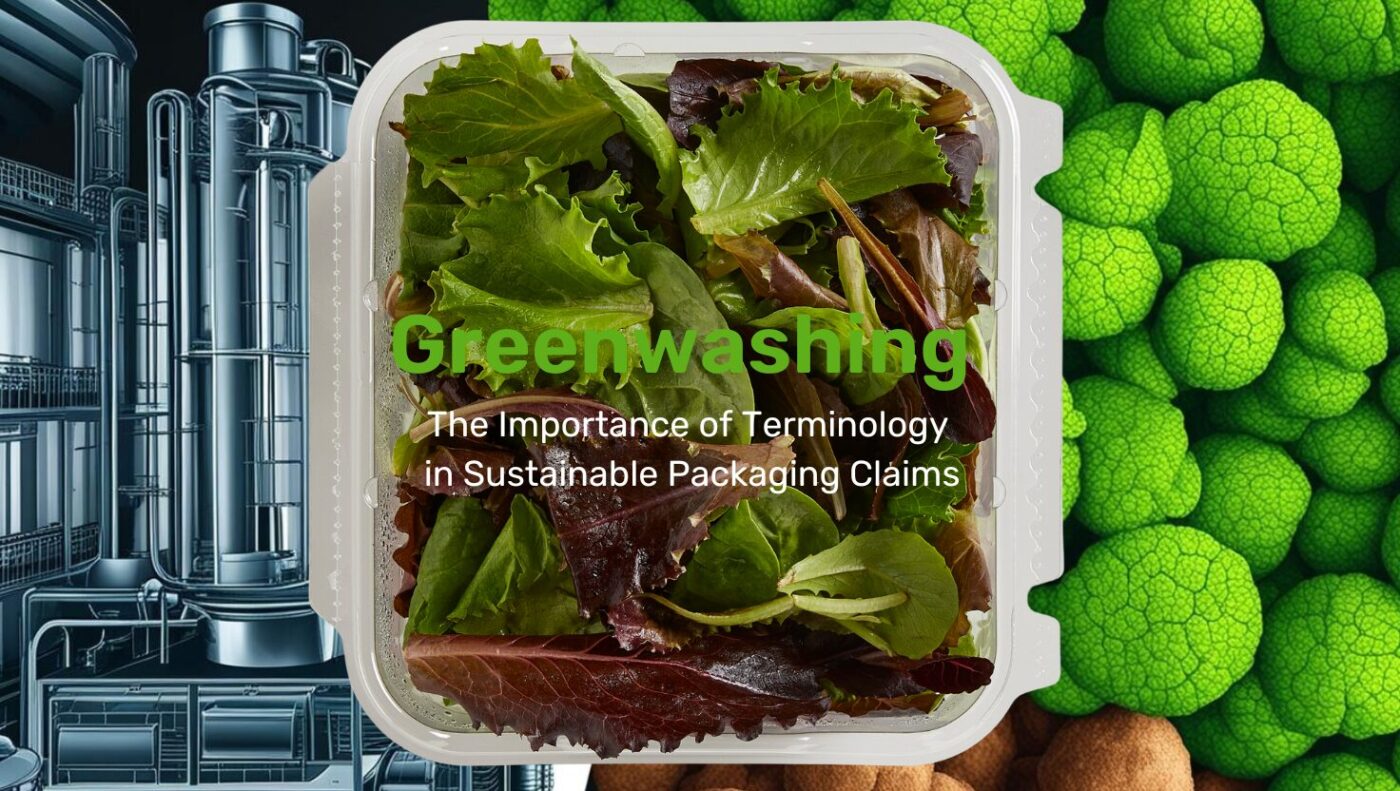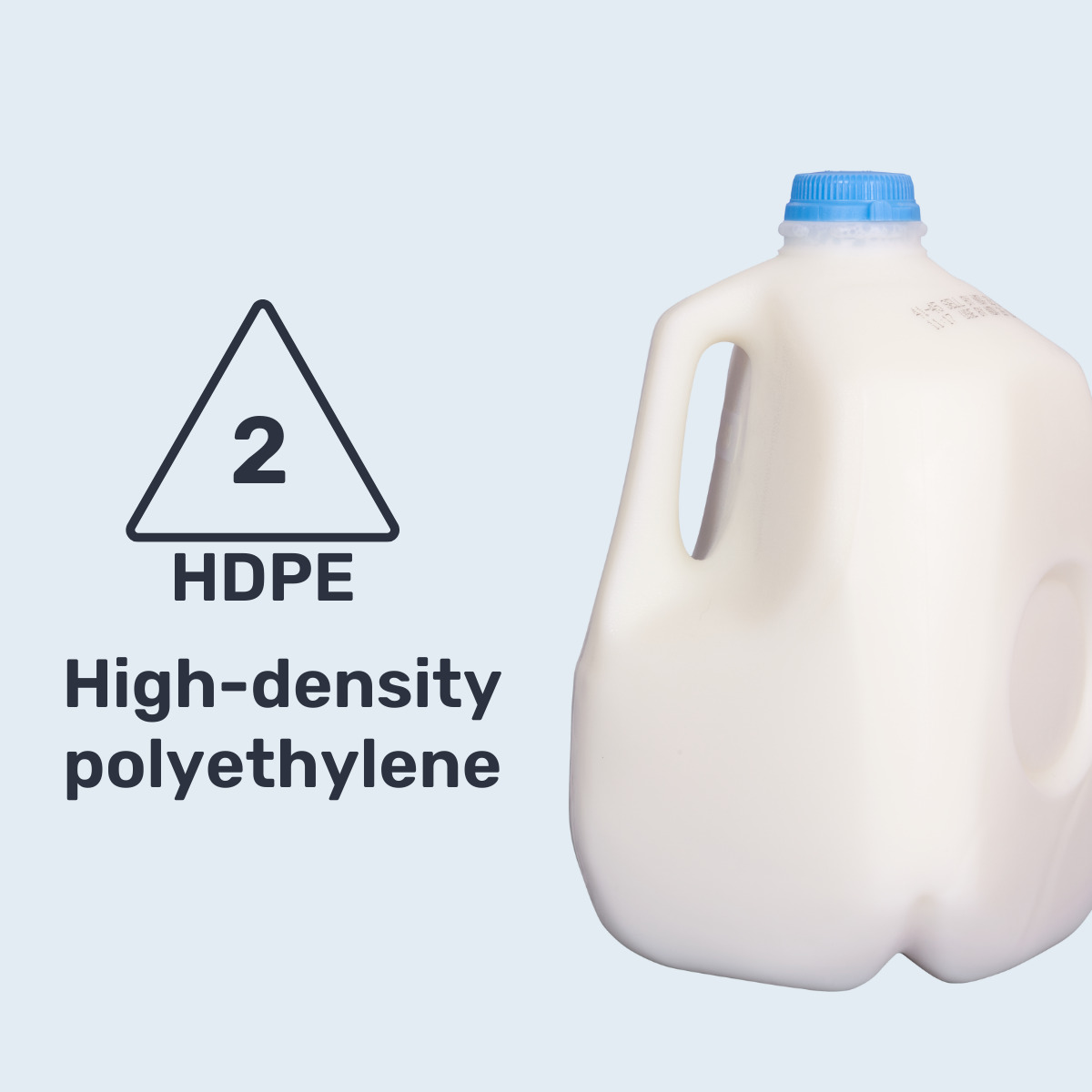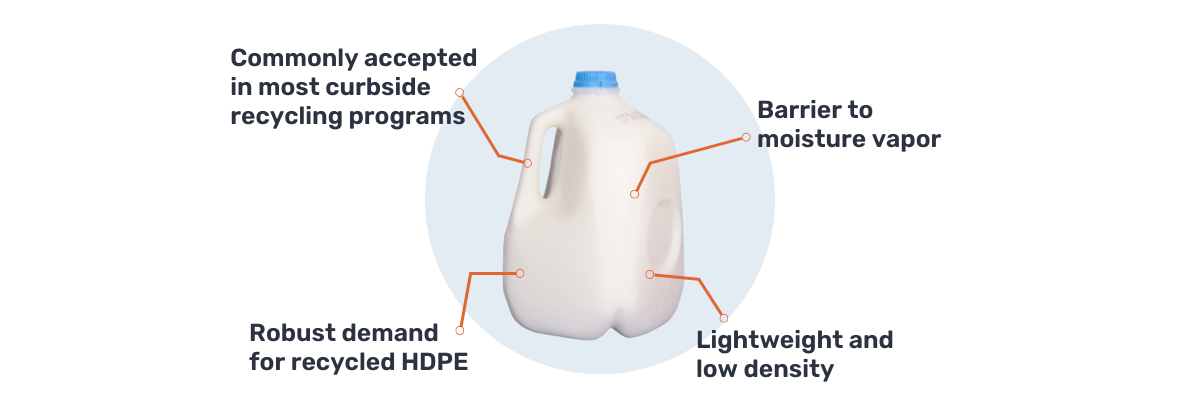
Understanding the Language of Sustainability As the push for sustainable packaging grows,…


Welcome to Plastic Ingenuity’s blog series on packaging polymers! In this series, we will explore the different types of polymers used in packaging and their properties, applications, and environmental impact. We will also discuss the latest developments in sustainable packaging and how the industry is evolving to meet the growing demand for circular solutions. Join us as we dive into our second installment in a seven-part series with material #2: HDPE (High-Density Polyethylene)

HDPE (High-Density Polyethylene) is a versatile polymer that is commonly used in a wide range of packaging applications due to its unique properties. Despite the name, HDPE packaging is lightweight due to its low density compared to other polymers.
HDPE has great barrier to moisture vapor, so it is a common component of films used to keep foods fresh. It also has a high impact strength making it suitable for freezer grade applications, like ice cream containers. Additionally, it is highly chemically resistant which makes it a superior choice for chemicals. Other common applications include:
▪️ Bottles: HDPE is widely used for manufacturing bottles, particularly for beverages, cleaning products, and personal care products.
▪️ Containers: HDPE is used for food and non-food items, including dairy products, chemicals, and oils.
▪️ Bags: Plastic bags, including grocery bags, trash bags, and zip-lock bags.
▪️ Caps and closures: HDPE commonly found in caps and closures, such as those found on bottles, jars, and other containers.
▪️ Healthcare packaging: HDPE is found in containers for pills, syringes, and medical devices.
Like PET, HDPE has robust markets both for clear and colored materials. In fact, about 1.5 billion lbs. of HDPE gets recycled in the U.S. every year. The recycling rate for HDPE bottles is about 32% and all other rigid forms of HDPE are recycled at about 18%.
Recycled HDPE gets converted into packaging items, like bottles. A significant portion gets made into durable goods, like lumber and outdoor furniture.
Overall, HDPE is a highly versatile polymer that is well-suited for a wide range of packaging applications due to its durability, strength, and resistance to chemicals and moisture. For more information about sustainability in the plastics industry, visit www.plasticingenuity.com/sustainability
